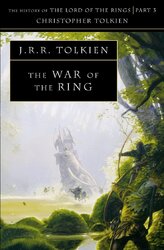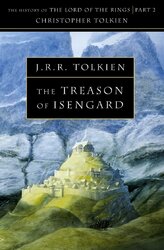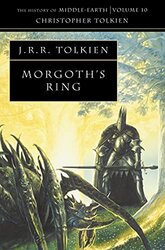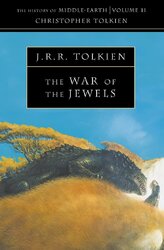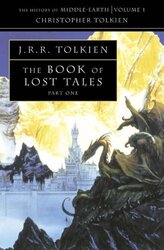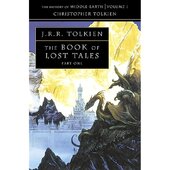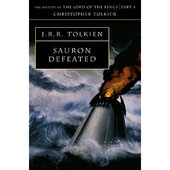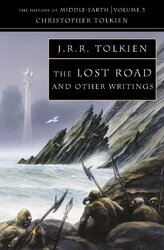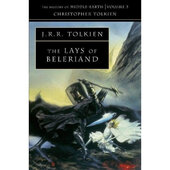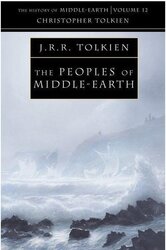Книги Крістофера Толкіна
Рік видання: 2002 Категорія: Фантастика. Фентезі
The third part of The History of The Lord of the Rings, an enthralling account of the writing of the Book of the Century which contains many additional scenes and includes the unpublished Epilogue in its entirety. The War of the Ring takes up the story of The Lord of the Rings with the Battle of
Рік видання: 2002 Категорія: Фантастика. Фентезі
The second part of The History of The Lord of the Rings, an enthralling account of the writing of the Book of the Century which contains many additional scenes and includes the unpublished Epilogue in its entirety. The Treason of Isengard continues the account of the creation of The Lord of the
Рік видання: 2002 Категорія: Фантастика. Фентезі
The first of two companion volumes which documents the later writing of The Silmarillion, Tolkien's epic tale of war. After the The Lord of the Rings was at last achieved, J R R Tolkien turned his attention once again to the Matter of the Elder Days'. The text of the Annals of Aman, the Blessed
Рік видання: 2002 Категорія: Фантастика. Фентезі
The second of two companion volumes which documents the later writing of The Silmarillion, Tolkien’s epic tale of war. In The War of the Jewels Christopher Tolkien takes up his account of the later history of The Silmarillion from the point where it was left in Morgoth’s Ring. The story now
Рік видання: 2002 Категорія: Фантастика. Фентезі
The Book of Lost Tales stands at the beginning of the entire conception of Middle-earth and Valinor for the Tales were the first form of the myths and legends that came to be called The Silmarillion. Embedded in English legend and English association, they are set in the narrative frame of a great
Рік видання: 2002 Категорія: Фантастика. Фентезі
This second part of The Book of Lost Tales includes the tale of Beren and Lthien, Trin and the Dragon, and the only full narratives of the Necklace of the Dwarves and the Fall of Gondolin, itself the finest and most exciting depiction of a battle that Tolkien ever wrote. Each tale is followed by a
Рік видання: 2002 Категорія: Фантастика. Фентезі
The final part of The History of The Lord of the Rings, an enthralling account of the writing of the Book of the Century which contains many additional scenes and includes the unpublished Epilogue in its entirety. In the first section of Sauron Defeated Christopher Tolkien completes his
Рік видання: 2002 Категорія: Фантастика. Фентезі
At the end of 1937, J R R Tolkien reluctantly set aside his work on the myths and heroic legends of Valinor and Middle-earth and began The Lord of the Rings. This fifth volume of The History of Middle-earth completes the examination of his writing up to that time. Later forms of The Annals of
Рік видання: 2002 Категорія: Фантастика. Фентезі
This, the third volume of The History of Middle-earth, gives us a priviledged insight into the creation of the mythology of Middle-earth, through the alliterative verse tales of two of the most crucial stories in Tolkien's world - those of Turien and Luthien. The first of the poems is the
Рік видання: 2002 Категорія: Фантастика. Фентезі
The first part of The History of The Lord of the Rings, an enthralling account of the writing of the Book of the Century which contains many additional scenes and includes the unpublished Epilogue in its entirety. The Return of the Shadow is the story of the first part of the history of the
Рік видання: 2002 Категорія: Фантастика. Фентезі
The Peoples of Middle-earth traces the evolution of the Appendices to The Lord of The Rings, which provide a comprehensive historical structure of the Second and Third Ages, including Calendars, Hobbit genealogies and the Westron language. The book concludes with two unique abandoned stories: The
Рік видання: 2002 Категорія: Фантастика. Фентезі
The fourth volume that contains the early myths and legends which led to the writing of Tolkien’s epic tale of war, The Silmarillion. In this fourth volume of The History of Middle-earth, the shaping of the chronological and geographical structure of the legends of Middle-earth and Valinor is
Відгуки про Крістофера Толкіна Новий
Поділіться своїми враженнями!
